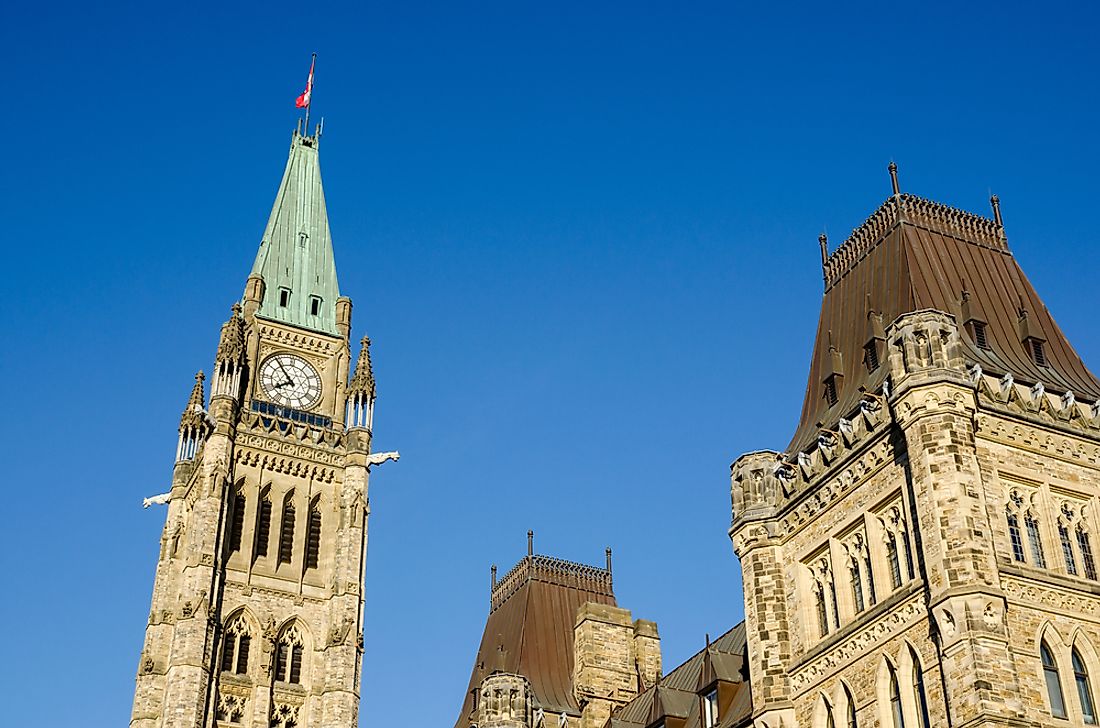What Type Of Government Does Canada Have?

The Government of Canada formally referred to as Her Majesty's Government is the federal administration of Canada, which is a federal parliamentary system under a constitutional monarchy. The federal constitutional monarchy was established through the Constitution Act of 1867, which further outlines the elements of governance in the country. The constitution is composed of the written statutes, court rulings, customs, judicial decisions, and other unwritten conventions and traditions which go back to 1763. Canada’s written part of the constitution is made up of the Constitution Act of 1867, which created the federation of four provinces, and the Constitution Act of 1982, and other amendments the last of which was amended in 2011. Canada is a member of the Commonwealth.
The Executive Branch Of The Government Of Canada
The head of state is the monarch and is represented by the Governor General Davis Johnston who began his duties on October 1, 2010. The monarch is Queen Elizabeth II who took the leadership in 1952. The head of the government is the Prime Minister, and the incumbent is Justin Pierre James Trudeau of the Liberal Party who took office on November 4, 2015. The cabinet is made up of the federal ministers who are appointed by the prime minister ordinarily from members of his party in parliament. The monarchy is an inherited position and is responsible for the appointment of the governor-general after the advice of the prime minister and serve for a five-year term. After the parliamentary elections, Governor-General selects the prime minister who is the leader of the majority party in the House of the Commons.
The Legislative Branch Of The Government Of Canada
Canada has a bicameral parliamentary system consisting of the Senate and the House of Commons. The Senate members are appointed by the Governor-General with the advice of the Prime Minister, and they are 105 members in total and may serve up to the age of 75 years. The House of Commons or the chamber de communes, on the other hand, is made up of 338 seats whose members are elected from the constituencies by a simple vote majority and can serve for a maximum of only four years. The elections of the House of Commons were held on October 19, 2015, and the next one would take place in 2019. The Liberal party has majority seats constituting 39.5% of the house, and the conservative party is 31.9%.
The Judiciary Of Canada
Supreme Court is the highest court in Canada and is made up of the chief justice and other eight judges. Before 1949, appeals beyond the Supreme Court could be heard by the Judicial Committee of the Privy Council in London and 1949 the country abolished any appeals that go beyond the Supreme Court. The prime minister appoints the chief justice, and the judges of the Supreme Court and the judges serve for life with a mandatory retirement of 75 years. Besides, the Supreme Court there are other subordinate courts in the country at the federal level and the provincial or territorial level. At the federal level are a Federal Court of Appeal, federal court, Tax Court of Canada, Federal administrative tribunals, and courts martial. At the provincial level are the provincial superior courts, specialized courts, and courts of the first instance. In 1999 the circuit court or the Nunavut Court was established which has the powers of the provincial superior court, it was to serve some isolated settlements.
Federalism
The legislative power in Canada according to the constitution is divided into two, the parliament of the provincial government and the parliament of the federal government. The legislature at the provincial level can only pass laws that are reserved to them in the constitution such as the provincial officers, education, charitable institutions, and municipal governments. The federal parliament can pass laws such as the postal services, criminal law, census, navigation and shipping, military, banking and currency, First Nations, patents, copyrights, and naturalization. Sometimes the jurisdictions of the federal parliament and the provincial parliament seem to overlap, for example, the federal Parliament may regulate divorce and marriage; however, solemnize marriages are governed by the provincial parliament. Both the parliaments have the powers to impose taxes, punish crimes, regulate agriculture and borrow money.







